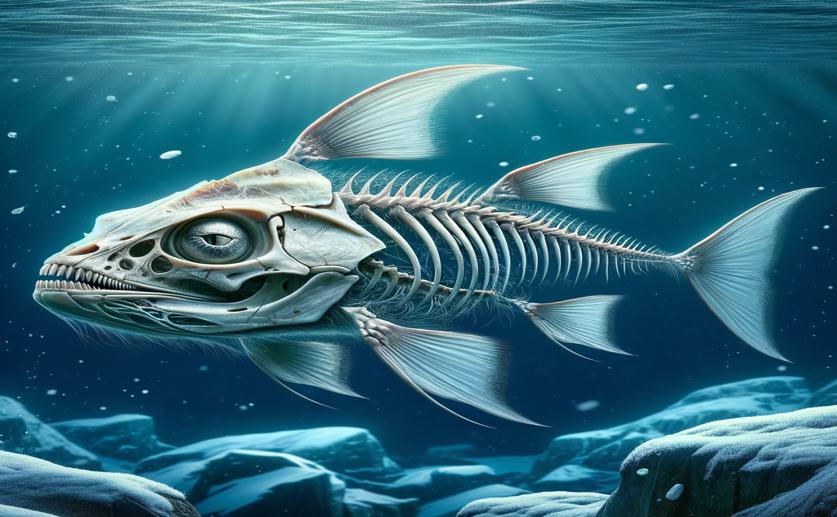
Bone Study Reveals Secrets of Mysterious Antarctic Fish
Jenn Hoskins
8th August, 2024

Image Source: Natural Science News, 2024
Key Findings
- The study of Gvozdarus svetovidovi by Ohio University researchers reveals that this rare Antarctic fish lives in the mesopelagic zone, between 295 and 550 meters deep
- G. svetovidovi has an elongated neurocranium and jaws, but unlike many other notothenioids, it does not have a juvenile-like skeleton
- The fish's skeletal structure supports subcutaneous fat deposits, suggesting it is neutrally buoyant, which is crucial for survival in deep-water environments
BiochemAnimal ScienceMarine Biology
References
Main Study
1) Osteology provides insight into the biology of the enigmatic Antarctic notothenioid fish Gvozdarus svetovidovi
Published 7th August, 2024
https://doi.org/10.1007/s00300-024-03290-5
Related Studies
2) Age determination and validation studies of marine fishes: do deep-dwellers live longer?
Journal: Experimental gerontology, Issue: Vol 36, Issue 4-6, Apr 2001
3) Buoyancy adaptations in a swim-bladderless Antarctic fish.
4) Diversification Patterns of Lanternfishes Reveal Multiple Rate Shifts in a Critical Mesopelagic Clade Targeted for Human Exploitation.
5) Bone microstructure and bone mineral density are not systemically different in Antarctic icefishes and related Antarctic notothenioids.



 4th July, 2024 | Jim Crocker
4th July, 2024 | Jim Crocker